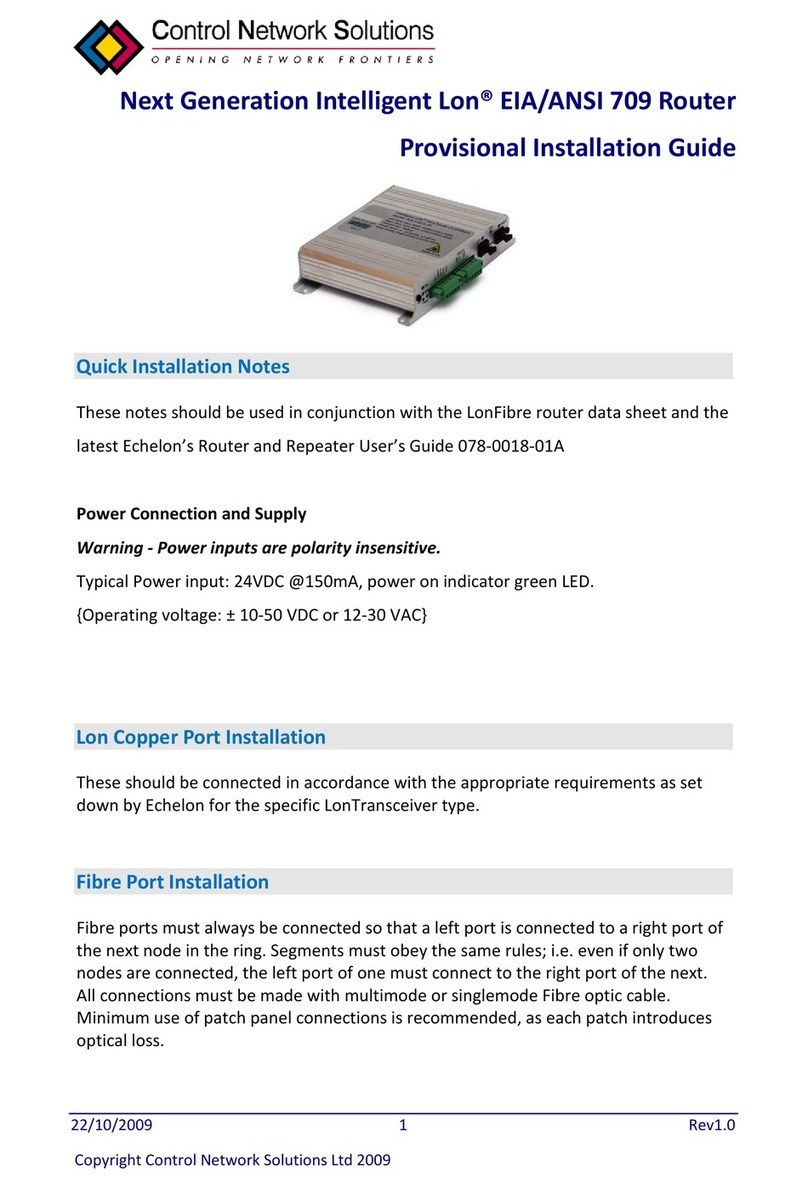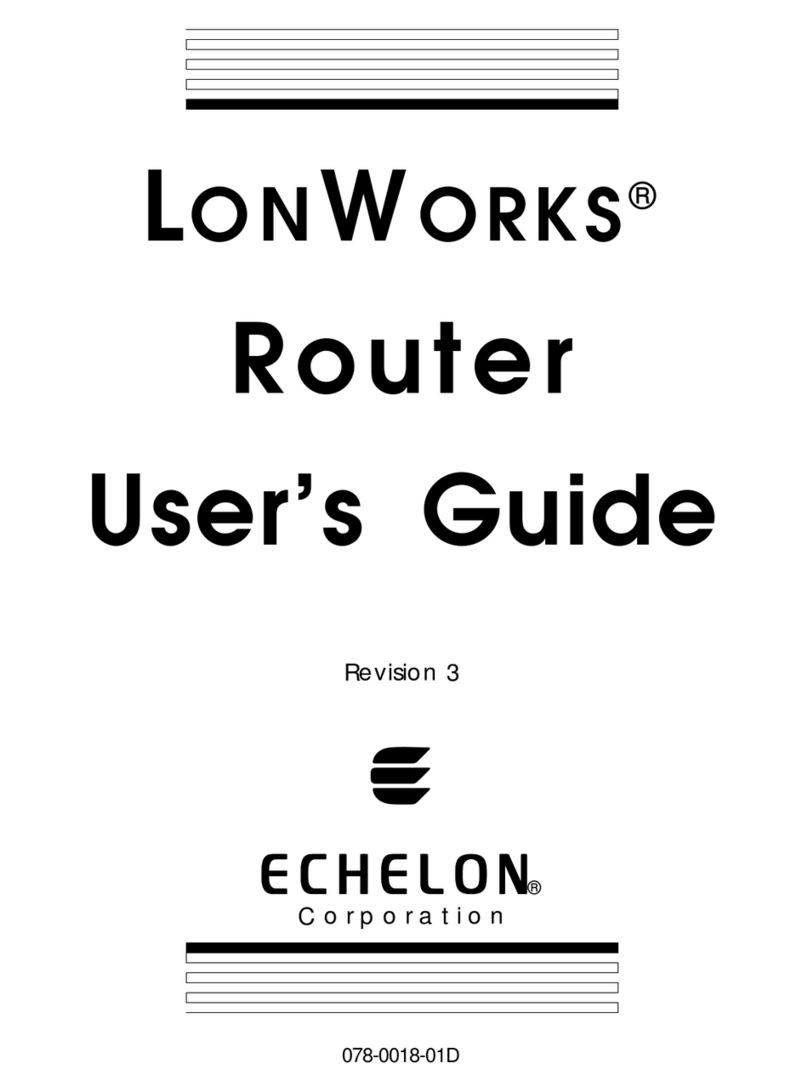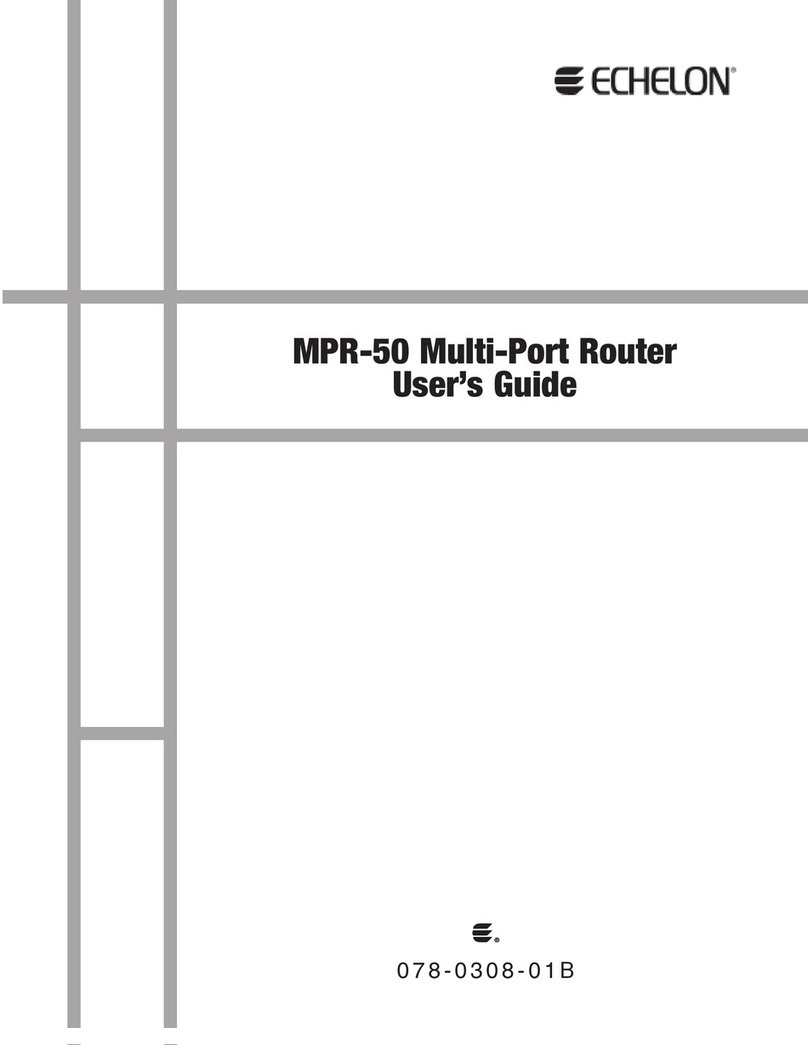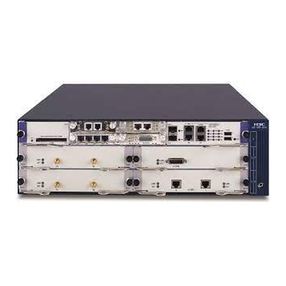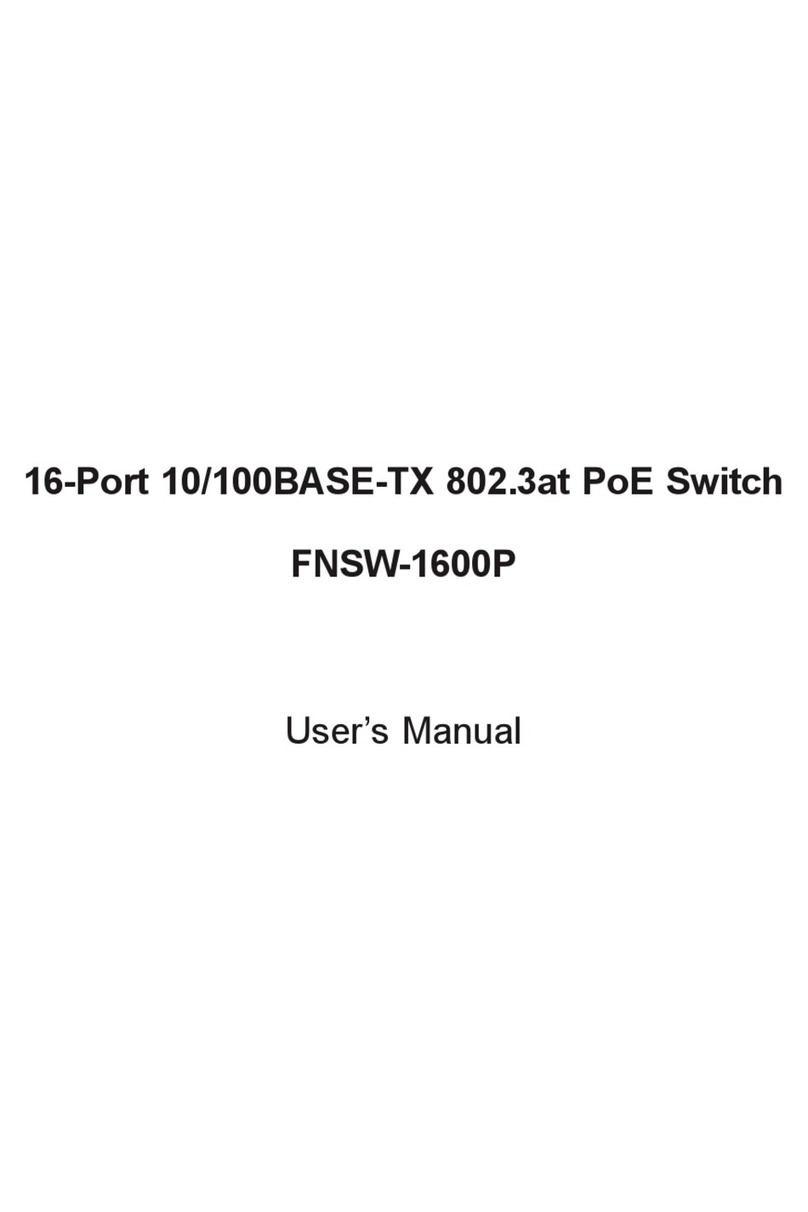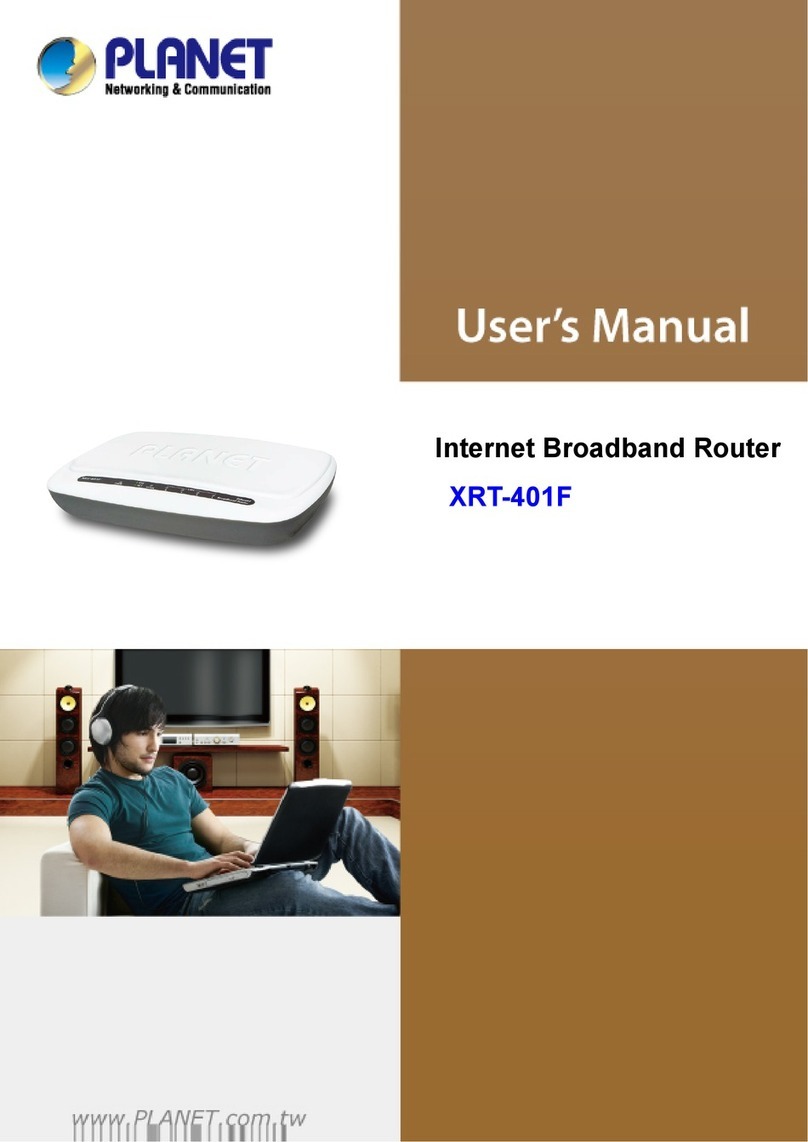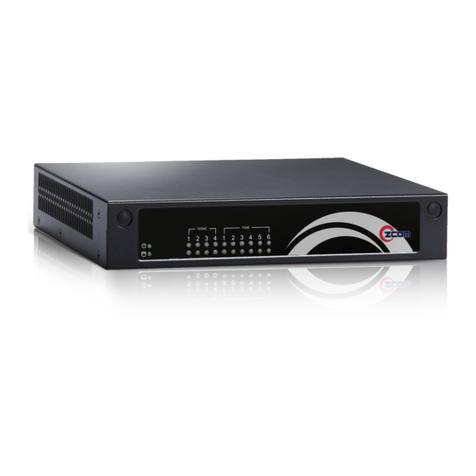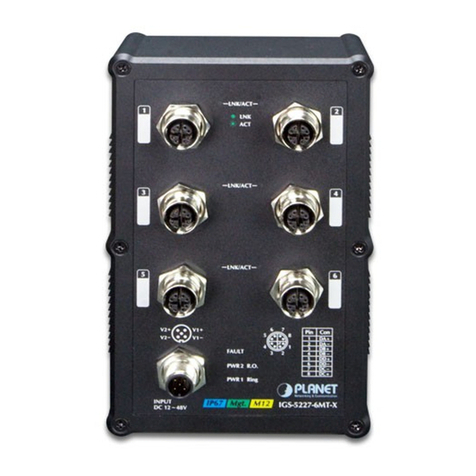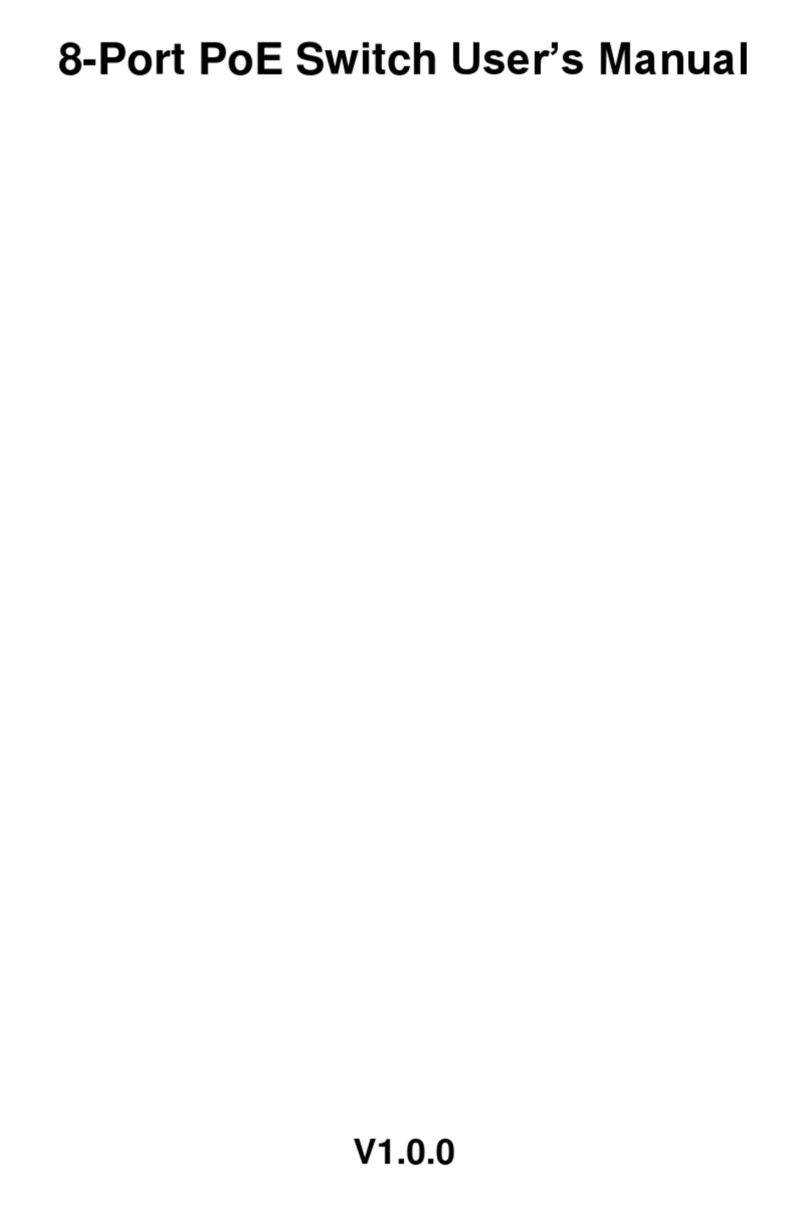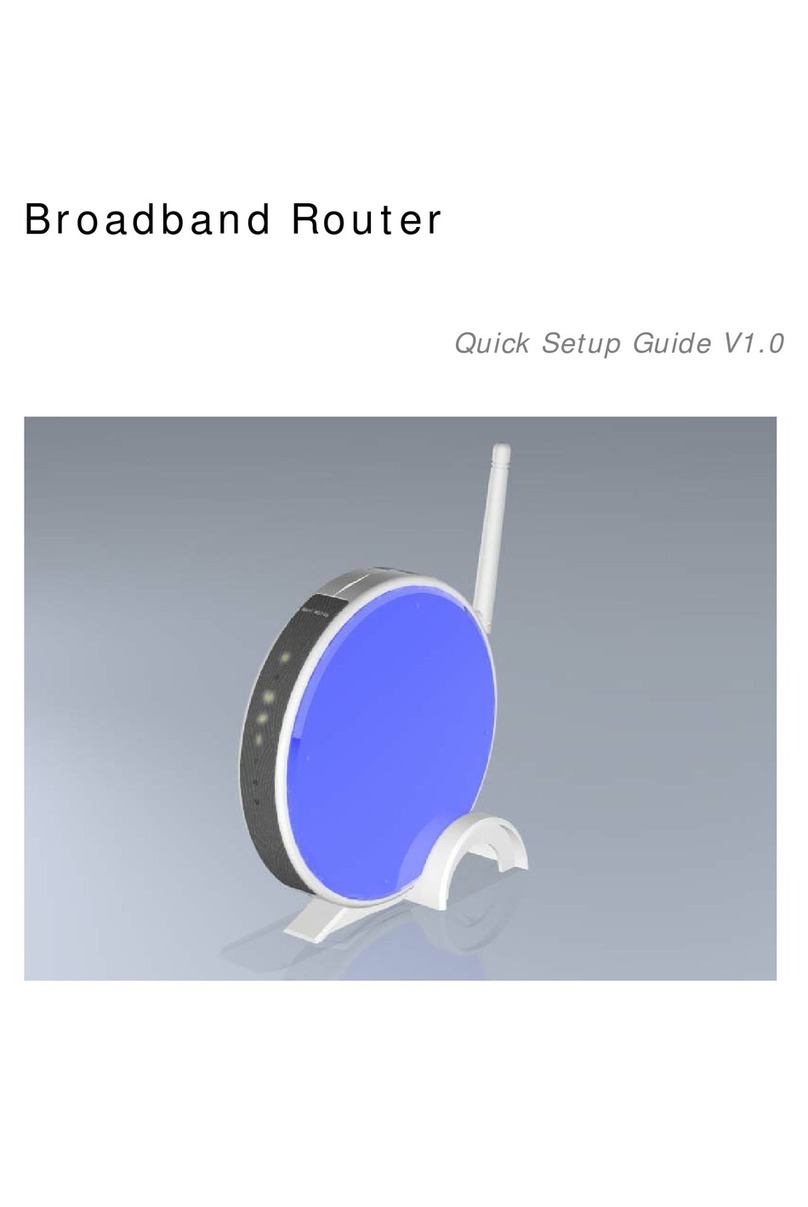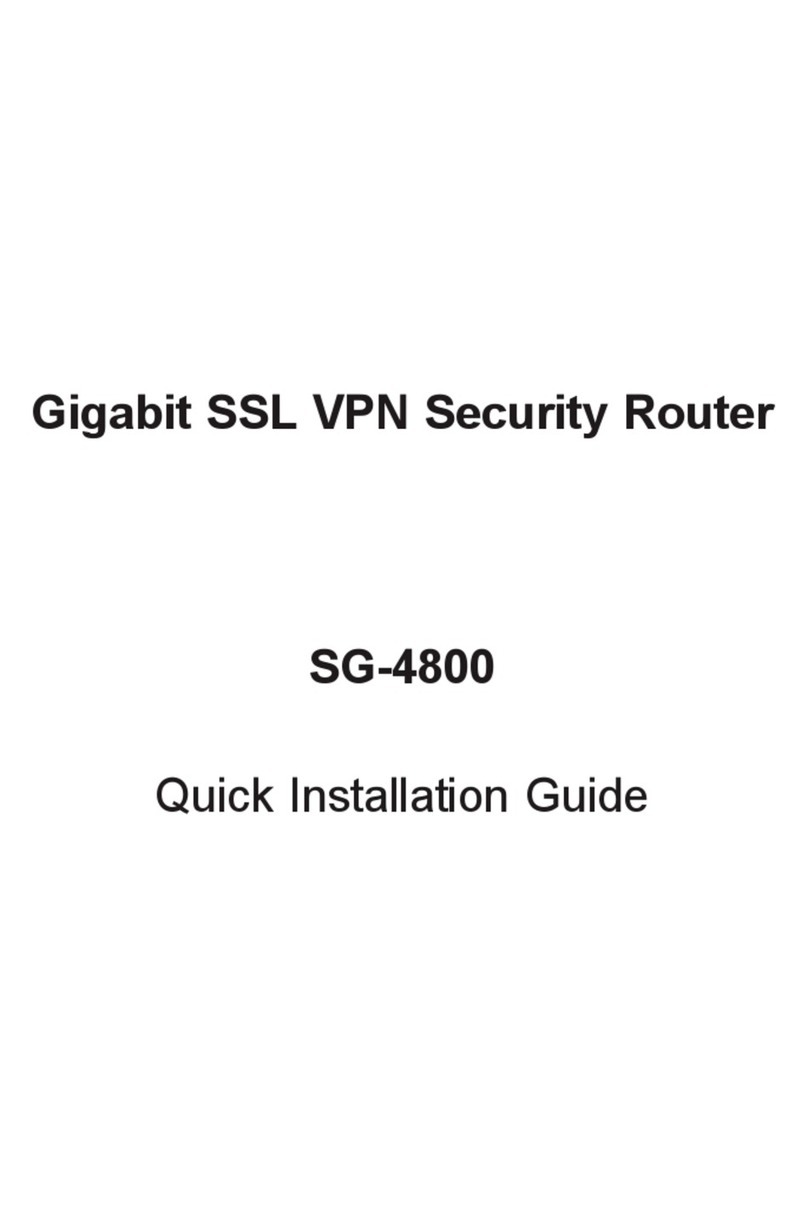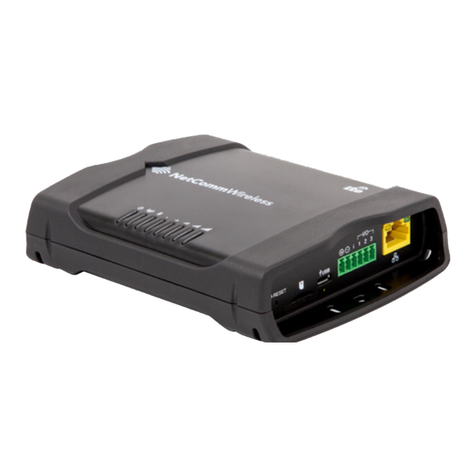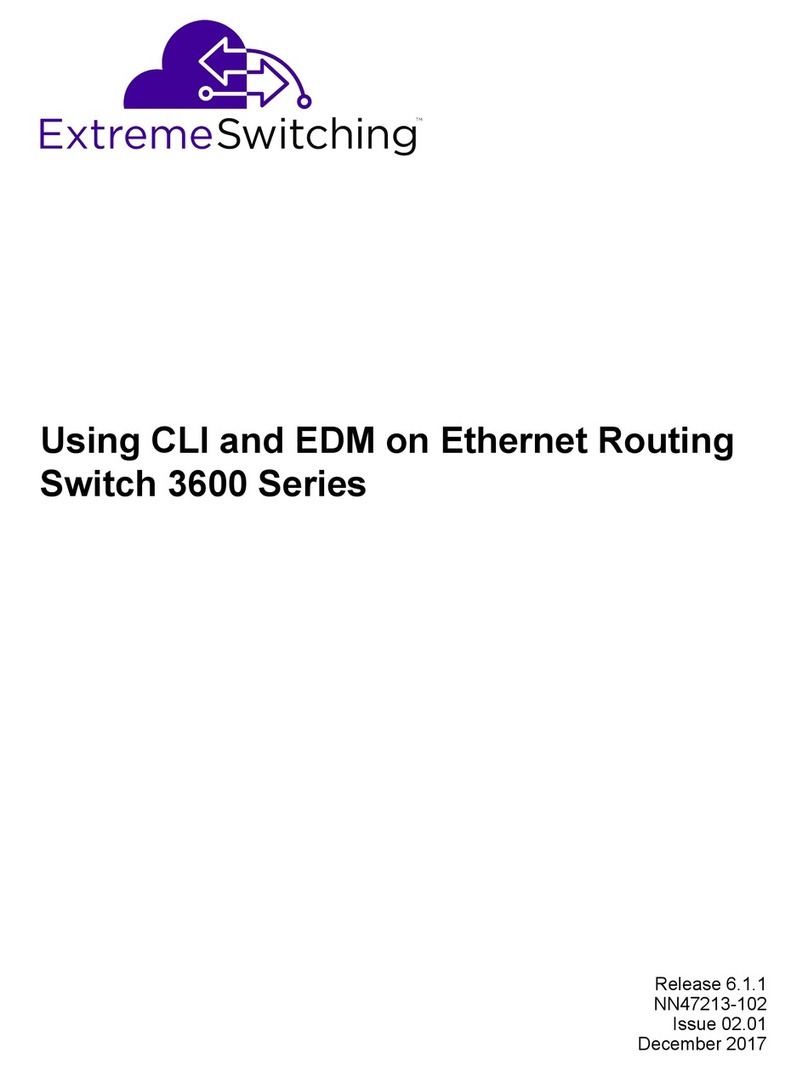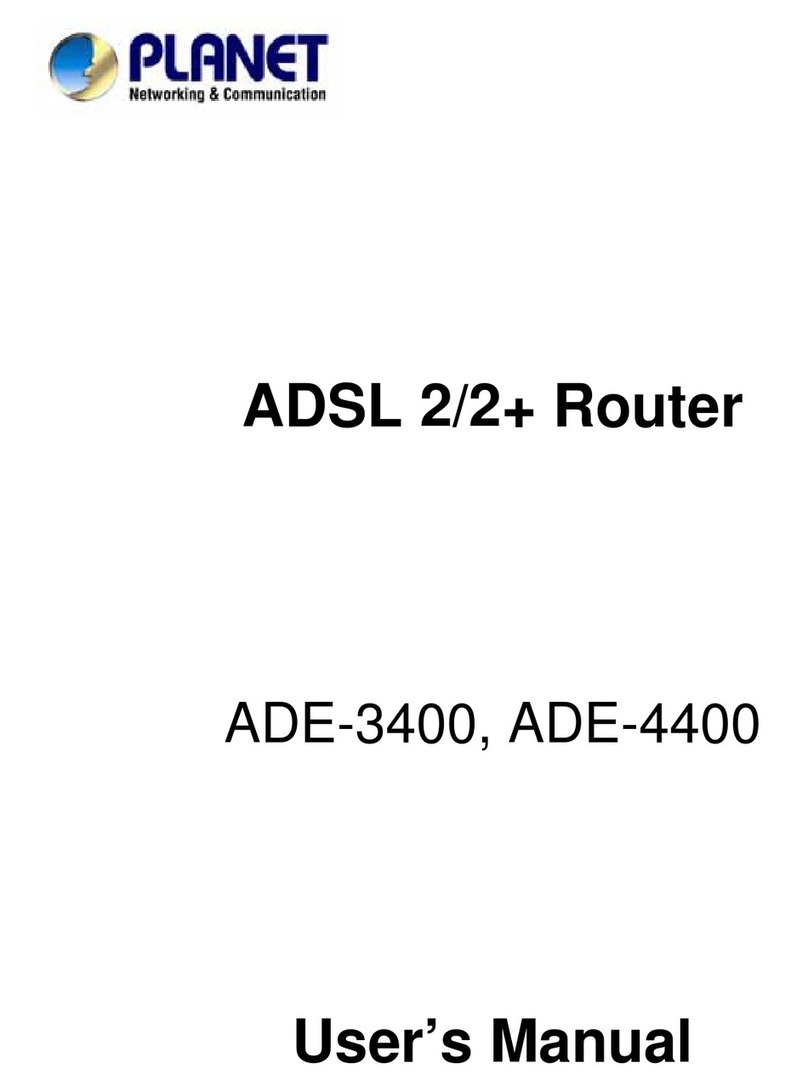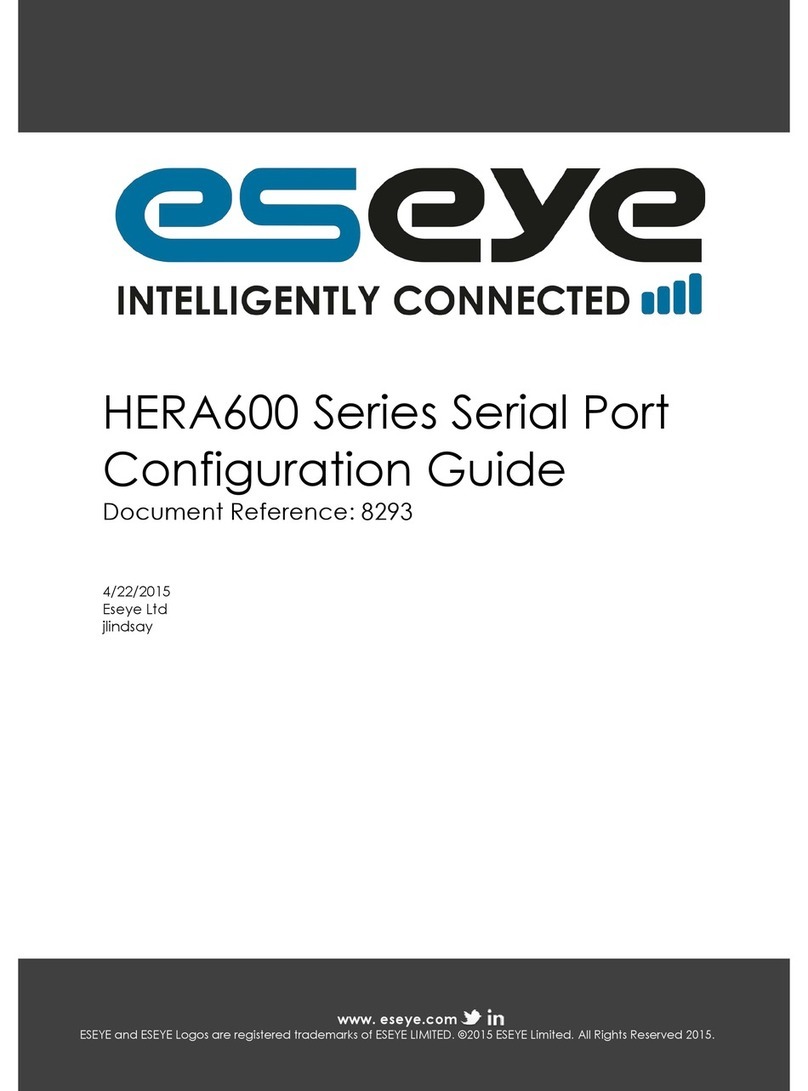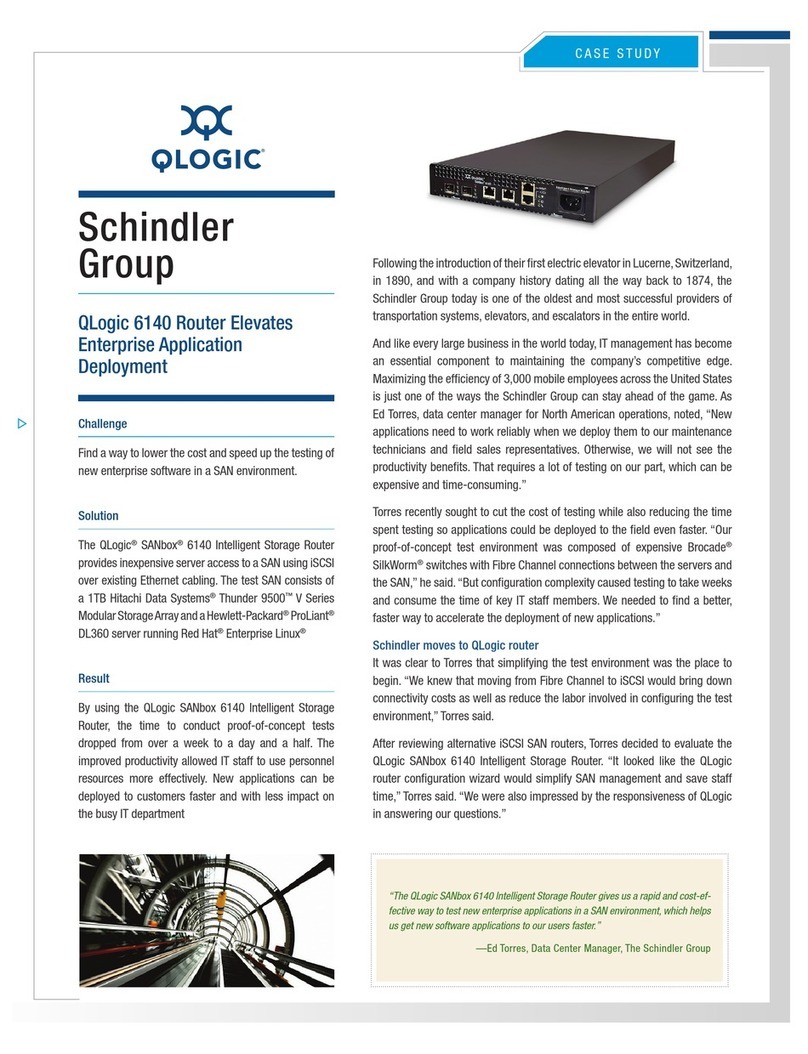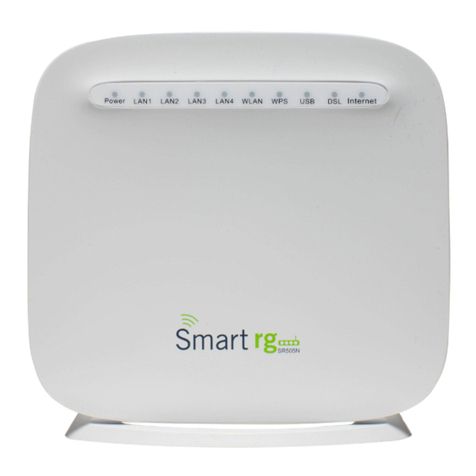Echelon LONWORKS User manual

LONWORKS®Router
User’s Guide
078-0018-01G

Echelon, i.LON, LNS, LonMaker,LONMARK,LonTalk,LONWORKS,
Neuron, NodeBuilder, 3120, 3150, and the Echelon logo are
trademarks of Echelon Corporation registered in the United
States and other countries.
Other brand and product names are trademarks or
registered trademarks of their respective holders.
Smart Transceivers, Neuron Chips, and other OEM Products
were not designed for use in equipment or systems, which
involve danger to human health or safety, or a risk of
property damage and Echelon assumes no responsibility or
liability for use of the Smart Transceivers or Neuron Chips in
such applications.
Parts manufactured by vendors other than Echelon and
referenced in this document have been described for
illustrative purposes only, and may not have been tested
by Echelon. It is the responsibility of the customer to
determine the suitability of these parts for each
application.
ECHELON MAKES AND YOU RECEIVE NO WARRANTIES OR
CONDITIONS, EXPRESS, IMPLIED, STATUTORY OR IN ANY
COMMUNICATION WITH YOU, AND ECHELON SPECIFICALLY
DISCLAIMS ANY IMPLIED WARRANTY OF MERCHANTABILITY
OR FITNESS FOR A PARTICULAR PURPOSE.
No part of this publication may be reproduced, stored in a
retrieval system, or transmitted, in any form or by any means,
electronic, mechanical, photocopying, recording, or
otherwise, without the prior written permission of Echelon
Corporation.
Printed in the United States of America.
Copyright © 1992, 2013 Echelon Corporation.
Echelon Corporation
www.echelon.com

Welcome
A LONWORKS®router connects two communications channels within a
LONWORKS network, and routes LonTalk®messages between them. Using a
LONWORKS router supports the installation of small or large networks, with
dozens to thousands of nodes.
This document describes how to design and develop a LONWORKS router based on
the Echelon Router 5000 chip, the Echelon FT Router 5000 chip, or the Echelon
RTR-10 Router Core Module.
This document does not describe any of the following Echelon prepackaged router
products: MPR-50 Multi-Port Router, i.LON®600 LONWORKS/IP Server, CRD
3000 Power Line/RF Bridge, or LonPoint Router.
Audience
This guide provides user instructions for users of LONWORKS routers. It also
provides information for developers who plan to develop a LONWORKS router
based on either the Router 5000 chip or the FT Router 5000 chip, or who plan to
integrate the RTR-10 router into embedded or standalone routers.
Related Documentation
The following manuals are available from the Echelon Web site
(www.echelon.com) and provide additional information that can help you develop
applications for Neuron®Chip or Smart Transceiver devices:
•Connecting a Neuron 5000 Processor to an External Transceiver
Engineering Bulletin (005-0202-01D). This bulletin describes how to
connect a Neuron 5000 Processor’s communications port to external
transceivers for TP/XF-1250 channels or for EIA-485 networks, using an
external transceiver circuit. It also describes how to connect a Neuron
5000 Processor to a link-power TP/FT-10 channel using a LONWORKS
LPT-11 Link Power Transceiver.
•FT 3120 / FT 3150 Smart Transceiver Data Book (005-0139-01D).This
manual provides detailed technical specifications on the electrical
interfaces, mechanical interfaces, and operating environment
characteristics for the FT 3120®and FT 3150®Smart Transceivers.
•Introduction to the LONWORKS Platform (078-0391-01B). This manual
provides an introduction to the ISO/IEC 14908 (ANSI/CEA-709.1 and
EN14908) Control Network Protocol, and provides a high-level
introduction to LONWORKS networks and the tools and components that
are used for developing, installing, operating, and maintaining them.
•Junction Box and Wiring Guidelines for Twisted Pair LonWorks Networks
(005-0023-01P). This bulletin identifies the different types of junction
boxes and interconnections that can be used in twisted pair LONWORKS
networks in building and industrial control applications.

iv
•LonMaker User's Guide (078-0333-01A). This manual describes how to
use the LonMaker®Integration Tool to design, commission, monitor and
control, maintain, and manage a LONWORKS network.
•LonMark®Application Layer Interoperability Guidelines. This manual
describes design guidelines for developing applications for open
interoperable LONWORKS devices, and is available from the LonMark
Web site, www.lonmark.org.
•LonWorks FTT-10A Free Topology Transceiver User's Guide (078-0156-
01G). This manual provides specifications and user instructions for the
FTT-10A Free Topology Transceiver.
•LonWorks LPT-11 Link Power Transceiver User's Guide (078-0198-01A).
This manual provides technical specifications on the electrical and
mechanical interfaces and operating characteristics for the LPT-11 Link
Power Transceiver.
•LonWorks TPT Twisted Pair Transceiver Module User's Guide (078-0025-
01C). This manual provides detailed specifications on the electrical and
mechanical interfaces and operating environment characteristics for the
TPT/XF-78 and TPT/XF-1250 transceiver modules.
•NodeBuilder®FX User’s Guide (078-0405-01A). This manual describes
how to develop a LONWORKS device using the NodeBuilder tool.
•PL 3120 / PL 3150 / PL 3170 Power Line Smart Transceiver Data Book
(005-0193-01C).This manual provides detailed technical specifications
on the electrical interfaces, mechanical interfaces, and operating
environment characteristics for the PL 3120, PL 3150, and PL 3170™
Smart Transceivers.
•Series 5000 Chip Data Book (005-0199-01C). This manual provides
detailed specifications on the electrical interfaces, mechanical interfaces,
and operating environment characteristics for the FT 5000 Smart
Transceiver and Neuron 5000 Processor.
All of the Echelon documentation is available in Adobe®PDF format. To view the
PDF files, you must have a current version of the Adobe Reader®, which you can
download from Adobe at: get.adobe.com/reader.
For information about previous generation Neuron Chips, see one of the Neuron
Chip Data Books: Motorola®LONWORKS Technology Device Data, Toshiba
Neuron Chip TMPN3150/3120, or Cypress™ Neuron Chip Technical Reference
Manual.
Getting Support
You can get technical support for any of Echelon’s current product offerings by
contacting Echelon Support: www.echelon.com/support.
You can also search the Echelon Knowledge Base for known product issues:
www.echelon.com/support/kb/search.asp. The Knowledge Base contains a wealth
of information about Echelon products and technologies, including technical
articles that range from “How to” articles that describe how to complete a specific
task to “Bug” articles that document known issues with Echelon products.

FCC Notice
The RTR-10 Router Core Module is designed to comply with the limits for a Class
B digital device, pursuant to Part 15 of the FCC Rules. The Router 5000 chip is
designed to comply with FCC Part 15 Subpart B and EN 55022 Level B.
These limits are designed to provide reasonable protection against harmful
interference when the equipment is operated in a commercial environment. This
equipment generates, uses, and can radiate radio frequency energy and, if not
installed and used in accordance with the instruction manual, may cause harmful
interference to radio communications. However, there is no guarantee that
interference will not occur in a particular installation.
Caution: Changes or modifications not covered in this manual must be
approved in writing by the manufacturer’s Regulatory Engineering
department. Changes or modifications made without written approval
may void the user’s authority to operate this equipment.
VDE Notice
The RTR-10 Router Core Module product is designed to comply with VDE 0871
Level B as a peripheral device. To ensure continued compliance, this product
should only be used in conjunction with other compliant devices.
Canadian DoC Notice
The RTR-10 Router Core Module digital apparatus does not exceed the Class A
limits for radio noise emissions from digital apparatus set out in the Radio
Interference Regulations of the Canadian Department of Communications.
L’ appareil RTR-10 Router Core Module numérique n’émet pas de bruits
radioélectriques dépassant les limites applicables aux appareils numériques de la
classe A prescrites dans le règlement sur la brouillage radioélectrique édicté par
le Ministère des Communications du Canada.


Table of Contents
Welcome.........................................................................................................iii
Audience ........................................................................................................iii
Related Documentation ................................................................................iii
Getting Support............................................................................................. iv
FCC Notice ..................................................................................................... v
VDE Notice ..................................................................................................... v
Canadian DoC Notice..................................................................................... v
Chapter 1. Introduction to LonWorks Routers.......................................... 1
Introduction.................................................................................................... 2
LonWorks Router Products ........................................................................... 3
RTR-10 Overview..................................................................................... 4
Router 5000 and FT Router 5000 Overview .......................................... 6
Comparing the RTR-10, Router 5000, and FT Router 5000 ................. 8
Router Types .................................................................................................. 9
Repeater ................................................................................................... 9
Bridge ....................................................................................................... 9
Configured Router ................................................................................... 9
Learning Router .................................................................................... 10
Loop Topology............................................................................................... 12
Power Line Routers...................................................................................... 13
LonTalk Protocol Support for Routers........................................................ 14
Message Buffers ........................................................................................... 14
RTR-10 Message Buffers....................................................................... 15
Router 5000 and FT Router 5000 Message Buffers ............................ 16
Router Performance ..................................................................................... 17
Chapter 2. LonWorks Router Electrical Interfaces................................19
Overview ....................................................................................................... 20
Electrical Interface....................................................................................... 20
RTR-10 Electrical Interface .................................................................. 20
ACLK2, BCLK1, and BCLK2 ......................................................... 22
ACP[4..0] and BCP[4..0] ................................................................. 22
ASVC~ and BSVC~......................................................................... 22
AXID[4..0] and BXID[4..0].............................................................. 22
PKT .................................................................................................. 24
RESET~ ........................................................................................... 24
SERVICE~....................................................................................... 25
Series 5000 Router Electrical Interface ............................................... 25
Router 5000 Pinout ......................................................................... 25
FT Router 5000 Pinout ................................................................... 27
Clock Pins ....................................................................................... 30
CP[4..0] – Router 5000 Only........................................................... 32
NETP and NETN – FT Router 5000 Only..................................... 33
IO[11..0] ........................................................................................... 34
JTAG Interface................................................................................ 35
Memory Interface............................................................................ 35
Power and Ground .......................................................................... 35
RST~ ................................................................................................ 36
SVC~ ................................................................................................ 38
Network Activity Indicator – Router 5000 .................................... 41
Network Activity Indicator – FT Router 5000 .............................. 43

viii
Power Requirements.................................................................................... 43
RTR-10 Power Requirements ............................................................... 43
Series 5000 Router Power Requirements ............................................ 43
Power Supply Decoupling and Filtering..................................................... 44
Low Voltage Protection................................................................................ 44
Chapter 3. LonWorks Router Mechanical Interfaces............................. 47
RTR-10 Mechanical Description ................................................................. 48
Series 5000 Router Mechanical Description .............................................. 50
Chapter 4. Developing a LonWorks Router..............................................53
Developing a Router with the RTR-10 Module .......................................... 54
Using Predefined Transceivers............................................................. 56
Using Custom Transceivers .................................................................. 56
Developing a Router with the Router 5000 Chip ....................................... 57
Using an External Transceiver with the Router 5000 ........................ 58
Using a TP/XF-1250 Transceiver................................................... 58
Using an EIA-485 Transceiver....................................................... 62
Using an FTT-10A Transceiver...................................................... 63
Using an LPT-11 Link Power Transceiver.................................... 66
Example Router 5000 Schematics ........................................................ 69
Developing a Router with the FT Router 5000 Chip ................................. 72
Connecting Half-Routers: Series 5000 and Series 3100 ............................ 74
Configuring a Series 5000 Half-Router ...................................................... 77
NodeBuilder Hardware Template ........................................................ 78
NodeBuilder Device Template .............................................................. 79
Buffer Configurations............................................................................ 80
Creating a Pre-Configured NME File .................................................. 80
Example Neuron C Source.................................................................... 81
Chapter 5. LonWorks Router Design Issues............................................. 83
PCB Layout Guidelines ............................................................................... 84
Router 5000............................................................................................ 84
FT Router 5000 ...................................................................................... 86
EMI Design Issues ....................................................................................... 87
Designing Systems for EMC (Electromagnetic Compatibility)................. 87
EMC Design Tips................................................................................... 87
ESD Design Issues ................................................................................ 88
Designing Systems for ESD Immunity ................................................ 88
Chapter 6. Installing a LonWorks Router.................................................91
Introduction.................................................................................................. 92
Defining a Network Topology...................................................................... 92
Attaching the Router to a Network............................................................. 92
Connecting Power ........................................................................................ 93
Installing the Router on a Network ............................................................ 94
Router Installation with the LonMaker Integration Tool .................. 94
Router Installation with Network Management Messages ................ 94
Testing Router Installation ......................................................................... 95
Chapter 7. Network Management Messages ............................................ 97
Introduction.................................................................................................. 98
Standard Messages ...................................................................................... 98
Router-Specific Messages ............................................................................ 99
Router-Specific Network Management Messages ............................. 100

Set Router Mode.............................................................................. 98
Group or Subnet Table Clear ......................................................... 99
Group or Subnet Table Download.................................................. 99
Group Forward................................................................................ 99
Subnet Forward............................................................................. 100
Group No Forward ........................................................................ 100
Subnet No Forward....................................................................... 100
Group or Subnet Table Report ..................................................... 101
Router Status ................................................................................ 101
Far Side Escape Code ................................................................... 102
Router Options Set with Write Memory ............................................ 102
Set Routing Algorithm.................................................................. 102
Set Buffer Size............................................................................... 102
Set Priority Output Buffer Queue Count .................................... 103
Set Input and Non-Priority Buffer Queue Count........................ 104
Appendix A. Communications Parameters for LonWorks Routers..105
Communications Parameters.................................................................... 106


LonWorks Router User’s Guide 1
1
Introduction to LonWorks Routers
This chapter describes the router theory of operation, including router
types, LonTalk protocol support for routers, and router use of message
buffers.

2 Introduction to LonWorks Routers
Introduction
In general terms, a router is a device that forwards data packets between
communications networks. The router connects to the data lines from each
network, and reads address information in each data packet to determine the
packet’s destination.
A LONWORKS router connects two communications channels within a LONWORKS
network, and routes LonTalk messages between them. Using a LONWORKS
router supports the installation of small or large networks, with dozens to
thousands of nodes.
Figure 1 shows a typical router installation, with a free topology channel and a
78 kbps bus topology channel connected to a 1.25 Mbps backbone twisted pair
channel. Because the network includes the routers, applications on each of the
LONWORKS devices can communicate with each other transparently, as if they
were installed on a common channel.
Figure 1. Sample Router Installation
A single router can connect two channels, or multiple routers (called redundant
routers) can connect the same pair of channels. Redundant routers provide fault
tolerance by providing more than one routing path from one channel to another.
They are also required when not all devices on a given channel are able to hear
one another (referred to as an “ear shot problem”), for example on a radio
frequency channel. For a router to function as a redundant router, the router
must be configured to be a Configured router (see Router Types on page 9).
LONWORKS routers are used to:
•Extend the limits of a single channel. You can use a router to add a
channel to a LONWORKS network to support additional devices or to
extend the maximum channel length. You can add multiple routers,
depending on the capacity or distance needed.
•Interface different communications media, or bit rates, in a LONWORKS
network. For example, you might want to trade data rate for distance on
portions of the network, or to use a 1.25 Mbps backbone twisted pair
channel to connect several 78 kbps free topology and link power channels.
Alternatively, you might want to use power line for a portion of the

LonWorks Router User’s Guide 3
network where the devices are subject to frequent physical relocation, or
if cable installation is difficult. For each of these cases, you use a router
to connect the dissimilar LONWORKS channels.
•Enhance the reliability of the LONWORKS network. The two channels that
connect to a router are logically isolated, so a failure on one channel does
not affect the other channel. For example, in an industrial control
network, isolation among connected cells might be desirable to prevent a
failure in a single cell from bringing down multiple cells. You can achieve
this goal by dedicating channels to individual cells and isolating them
from one another with routers.
•Improve overall network performance. You can use routers to isolate
traffic within subsystems. For example, in a cluster of industrial cells,
most of the communications might be between devices within cells rather
than across cells. Using intelligent routers across cells avoids forwarding
messages addressed to devices within specific cells, thus increasing the
capacity and decreasing the response time of the overall network.
The use of routers across channels is transparent to the application programs
within devices. Thus, you can develop applications without needing to know the
workings of the routers or even if the device’s channel will use a router. You only
need to consider routers when determining the network image of a device. When
you move a device from one channel to another, you need only change the
network image. Use a network management tool, such as the LonMaker
Integration Tool, to manage network images.
LonWorks Router Products
Echelon provides the following router products:
•MPR-50 Multi-Port Router (Model: 42150)
Five-channel (one TP/XF-1250 channel and four TP/FT-10 channels)
LONWORKS router. The MPR-50 can be used to connect two, three, or
four TP/FT-10 channels together, or it can be used to connect these
TP/FT-10 channels to a high-speed TP/XF-1250 backbone.
•i.LON 600 LONWORKS/IP Server (Model: 7260x)
An EIA-852 compliant LonTalk-to-IP router. The i.LON 600 provides
secure Internet access to LONWORKS devices and transforms the Internet
(or other IP-based network) into a pathway for LONWORKS control
information.
•CRD 3000 Power Line/RF Bridge (Model: 76520R)
A Power Line (PL) to RF communications device, designed primarily for
intelligent LONWORKS street lighting networks.
•LonPoint Router (Model: 4210x)
A two-channel router for TP/FT-10, TP/XF-78, or TP/XF-1250 LONWORKS
channels. Six models are available for various network connection
combinations.

4 Introduction to LonWorks Routers
•RTR-10 Router Core Module (Model: 61000R)
A compact module used by OEMs to build LONWORKS routers. The RTR-
10 consists of the core electronics and firmware needed to implement a
router.
•Router 5000 (Model: 14315R)
A semiconductor product used by OEMs to build half-routers or full
routers for various LONWORKS channel types. The Router 5000 includes
the firmware required to implement a half-router.
•FT Router 5000 (Model: 14285R)
A semiconductor product used by OEMs to build half-routers or full
routers for LONWORKS Free Topology (FT) channels. The FT Router 5000
includes the firmware required to implement a half-router.
Packaged routers eliminate the need to build hardware and obtain the necessary
electrical interference and safety certifications. Thus, they allow direct, off-the-
shelf integration into the user’s LONWORKS network. This manual does not
describe how to use the Echelon prepackaged router products. See the Echelon
router Web page (www.echelon.com/products/routers) for information about the
pre-packaged Echelon router products.
This manual describes those Echelon router products that allow OEMs to design
and build their own custom routers for LONWORKS channels: the RTR-10 Router
Core Module, the Router 5000 chips, and the FT Router 5000 chips.
RTR-10 Overview
The RTR-10 Router Core Module is a compact module used by OEMs to design
and build LONWORKS routers. A LONWORKS router connects two communications
channels and route LonTalk messages between them. They support installation
of networks with dozens to thousands of devices.
The RTR-10 Module consists of the core electronics and firmware required to
implement a router. Its compact single inline module (SIM) form factor
minimizes the board space required to implement a router. Vertical SIM sockets
are available to minimize board space; right-angle SIM sockets are also available
to minimize component height.
A complete router, using an RTR-10 module, consists of the module, two
transceivers, and a motherboard to connect the RTR-10 router to the two
transceivers, as shown in Figure 2 on page 5.

LonWorks Router User’s Guide 5
Figure 2. Block Diagram of a LonWorks Router Based on the RTR-10
As the figure shows, an RTR-10 router and two transceiver modules (one to
handle each of two channels connected by the router) can be mounted on a
motherboard, along with a single power supply and two network connectors.
This sub-assembly constitutes a LONWORKS router. It can be packaged in an
enclosure to meet unique form factor and environmental requirements.
Depending on the application, the package could contain a single router sub-
assembly, or could include other application-specific hardware. Multiple routers
can be packaged together for some applications, such as a backbone connecting
multiple channels.
The RTR-10 router comes preconfigured with many common LONWORKS
transceiver parameters. Two sets of five transceiver identification (XID) pins on
the RTR-10 router select the appropriate transceiver type for each side. The
transceiver ID inputs eliminate a manufacturing step by automatically
configuring the RTR-10 router for most transceivers. A special transceiver ID is
reserved for programming any custom type.
One side of the RTR-10 router has a fixed input clock rate of 10 MHz. This side
can be used with transceivers running at interface bit rates from 9.8 kbps to 1.25
Mbps. The second side of the RTR-10 router can be tied to the 10 MHz output of
the first side, requiring no external components for interface bit rates from 9.8
kbps to 1.25 Mbps. Alternatively, the 10 MHz output can be divided to a lower
frequency with external hardware and used as the input clock for the second side
to support transceivers running at bit rates as low as 610 bps.

6 Introduction to LonWorks Routers
Any pair of channel types can be connected by a router by selecting the
appropriate pair of transceivers. The RTR-10 router is compatible with all
LONWORKS transceivers, including standard transceivers for free topology, link
power, twisted pair, and power line. Using multiple communications media can
minimize installation costs and increase system performance by allowing easily
installed media, such as power line or link power, to be combined with high-
performance media such as TP/XF-1250 twisted pair.
Router 5000 and FT Router 5000 Overview
The Router 5000 chip and the FT Router 5000 chip (generically referred to as
Series 5000 router chips) are Echelon semiconductor products, based on the
Echelon Neuron 5000 Core, that are used to build half-routers and full routers for
LONWORKS channels. A LONWORKS router connects two communications
channels and route LonTalk messages between them. They support installation
of networks with dozens to thousands of devices.
Both the Router 5000 and FT Router 5000 include the Router firmware required
to implement a half-router. Each chip’s compact form factor minimizes the space
required to develop a half-router. You can implement two half-routers to develop
a full router for the same, or different, external transceiver types.
The FT Router 5000 integrates the high performance Neuron 5000 Core with a
free topology (FT) twisted pair transceiver. Thus, the FT Router 5000 supports
the LONWORKS TP/FT-10 channel type.
Table 1 lists commonly used channel and transceiver types for Router 5000-
based router halves; see Developing a Router with the Router 5000 Chip on page
57 for additional information about connecting a Router 5000 chip to these
external transceiver types. These external transceivers can run at interface bit
rates from 9.8 kbps to 1.25 Mbps.
Table 1. Common Channel and Transceiver Types for a Router 5000
Channel Type Transceiver for Half Router Notes
TP/FT-10 Echelon FTT-10A Free Topology
Transceiver (Model 50051)
Connection to the Router 5000 is
similar to the connection to a
Neuron Chip.
Use an FT Router 5000 for a
standard (non-link-powered)
TP/FT-10 channel or for a locally
powered device on a link-power
TP/FT-10 channel.
TP-RS485 Any EIA-485 transceiver Can use any standard 3.3V or 5V
EIA-485 transceiver.
TP/XF-78 Echelon TPT Twisted Pair
Transceiver Module (Model 50010)
Add differential driver and
differential comparator circuits
(contact Echelon Support).
TP/XF-1250 Echelon TPT Twisted Pair
Transceiver Module (Model 50020)
Add differential driver and
differential comparator circuits.

LonWorks Router User’s Guide 7
Channel Type Transceiver for Half Router Notes
Link-power Echelon LPT-11 Link Power
Transceiver (Model 50040)
Add linear regulator and TX buffer
circuit.
Echelon provides special licensing for other transceiver types, such as a Power
Line Smart Transceiver; contact Echelon Support for additional information.
A complete router using the Router 5000 consists of two Router 5000 half routers,
two transceivers, and a motherboard to connect the two half routers. A complete
router using the FT Router 5000 consists of two FT Router 5000 half routers
(each with its own FT-X3 Communications Transformer), and a motherboard to
connect the two half routers. Figure 3 shows block diagrams of both types of
Series 5000 based routers.
Figure 3. Block Diagrams of LONWORKS Routers Based on a Series 5000 Router Chip
In the left side of the figure, two Router 5000 half routers and two transceiver
modules, one to handle each of two channels connected by the router, can be
mounted on a motherboard, along with a single power supply and two network
connectors. This sub-assembly constitutes a LONWORKS router. In the right side

8 Introduction to LonWorks Routers
of the figure, two FT Router 5000 half routers, one to handle each of two channels
connected by the router, can be mounted on a motherboard, along with a single
power supply and two network connectors. This sub-assembly constitutes a
LONWORKS router. Although not shown in the figure, you can place a Router
5000 half router (with its transceiver module) and FT Router 5000 half router on
the same motherboard to create a LONWORKS router.
A complete LONWORKS router can be packaged in an enclosure to meet unique
form factor and environmental requirements. Depending on the application, the
package could contain a single router sub-assembly, or could include other
application-specific hardware. Multiple routers can be packaged together for
some applications, such as a backbone connecting multiple channels.
Unlike an RTR-10 router, you store the LONWORKS transceiver parameters for
each Router 5000 or FT Router 5000 half router in external EEPROM, thus
allowing you to define the appropriate transceiver type for each side.
Comparing the RTR-10, Router 5000, and FT Router
5000
Table 2 lists some of the major characteristics of the three router products
described in this manual.
Table 2. Comparing the RTR-10, Router 5000, and FT Router 5000
Parameter RTR-10 Router 5000 FT Router 5000
Package Integrated module with
both A side and B side
7mm x 7mm QFN chip 7mm x 7mm QFN chip
Voltage 5 V 3.3 V 3.3 V
Clock rate 10 MHz A side
≤10 MHz B side
5, 10, 20, or 40 MHz
system clock
(10 MHz crystal)
5, 10, 20, or 40 MHz
system clock
(10 MHz crystal)
Router Buffers 1254 bytes 25 KB 25 KB
Transceivers Any TP/FT-10
TP-RS485
TP/XF-78
TP/XF-1250
LPT-11 Link-power
Other (contact Echelon
Support)
TP/FT-10
(requires an FT-X3
Communications
Transformer)
The main difference between the Router 5000 and the FT Router 5000 is their
transceiver support. The FT Router 5000 supports only the TP/FT-10 channel,
but because the transceiver is integrated into the chip, you do not need to use an
FTT-10A Free Topology Transceiver (and associated circuitry to accommodate the
different voltage standards between the half router and transceiver).

LonWorks Router User’s Guide 9
Router Types
A LONWORKS router can use one of four routing algorithms: configured router,
learning router, bridge, and repeater. This selection allows you to trade system
performance for ease of installation. The configured router and learning router
algorithms create intelligent routers that selectively forward messages based on
network topology. Both sides of a router must use the same routing algorithm.
The following general rules apply to all four routing algorithms:
•For a message to be forwarded, it must fit into the router’s input and
output message buffers. A free input message buffer must be available.
•For a message to be forwarded, it must have a valid cyclic redundancy
check (CRC) code.
•Priority messages are forwarded as priority messages, but with the
priority level of the transmitting side rather than the priority level of the
originator of the message. If the transmitting side has not been installed
with a priority value, then priority messages are not forwarded in a
priority slot. The priority message is still flagged as a priority message,
so that if it passes through a second router that is installed with a
priority level, the second router transmits the message in a priority slot.
Repeater
A Repeater is a router that forwards all messages in both directions, regardless of
the message’s destination or domain. That is, a repeater forwards all valid
messages (that is, messages with a valid CRC code) to the other channel.
A Permanent Repeater behaves similarly, but its type cannot be changed after
creation.
Bridge
A Bridge is a router that forwards all messages received on either of the router’s
domains, regardless of the message’s destination. That is, a bridge forwards
packets received on one channel to the other channel, if the packet is sent on a
domain to which the bridge belongs. Use a bridge to span domains. In a single
domain network, a bridge functions essentially the same as a repeater.
A Permanent Bridge behaves similarly, but its type cannot be changed after
creation.
Configured Router
A Configured Router determines which packets to forward based on internal
routing tables. A configured router forwards only those messages which are
received on either of the router’s domains and which meet the forwarding rules
shown in Figure 4 on page 11 and Figure 5 on page 12. Configured routers
maintain their routing tables in non-volatile memory, and thus retain them after
a reset. These tables control forwarding of subnet and group-addressed
messages, and are managed by a network management tool.

10 Introduction to LonWorks Routers
A forwarding table is used for each domain on each side of the router. Each
forwarding table contains a forwarding flag for each of the 255 subnets and 255
groups in a domain. As shown in Figure 4 and Figure 5, these flags determine
whether or not a message should be forwarded or dropped based on the
destination subnet or group address of the message.
A network management tool initializes the forwarding tables using the network
management messages described in Chapter 7, Network Management Messages,
on page 95. By configuring the routing tables based on network topology, a
network management tool can optimize network performance and make the most
efficient use of available bandwidth. Configured routers should be used for
looping topologies; see Loop Topology on page 12.
For a LONWORKS router, there are two sets of forwarding tables, one in non-
volatile memory (typically EEPROM) and one in RAM. The non-volatile table is
copied to the RAM table when the router is initially powered-up, after a reset,
and when the router receives the Set Router Mode command with the Initialize
Routing Table option. The RAM table is used for all forwarding decisions.
Several of the operations in shown in Figure 4 and Figure 5 help prevent
message loops for service-pin messages. Service-pin messages require special
handling because they are broadcast to all nodes on the zero-length domain, and
have a source subnet ID of zero. When a router receives a service-pin message
with a source subnet ID of zero, the router modifies the source subnet field of the
message to be the router’s subnet on the receiving side. If the receiving side is
installed in two domains, two service-pin messages are forwarded, one for each
domain. Thus, the router can drop the service-pin message if a loop causes the
message to be received again on the same side.
Learning Router
A Learning Router, like a configured router, determines which packets to forward
based on internal routing tables. A learning router forwards only those messages
which are received on either of the router’s domains and which meet the
forwarding rules shown in Figure 4 on page 11 and Figure 5 on page 12. A
learning router always forwards all group-addressed messages. Learning routers
maintain their routing tables in non-volatile memory, and thus retain them after
a reset. These tables control forwarding of subnet and group-addressed
messages, and are updated automatically by the router firmware, rather than
their being configured by a network management tool. The group forwarding
tables are configured to always forward (flood) all messages with group
destination addresses.
When a router receives a packet with a destination address using a subnet ID, it
uses the subnet ID to determine whether to forward the packet. Learning
routers learn network topology by examining the source subnet of all messages
received by the router. Whenever a learning router receives a packet from one of
its channels, it uses the source subnet ID to learn the network topology. It sets
the corresponding routing table entries to indicate that the subnet in question is
to be found in the direction from which the packet was received. Because subnets
cannot span two channels connected to an intelligent router, the router can learn
which side a subnet is on whenever that subnet ID appears in the source address.
The subnet forwarding tables are initially configured to forward all messages
with subnet destination addresses. Each time a new subnet ID is observed in the
source address field of a message, its corresponding flag is cleared (that is,
Other manuals for LONWORKS
1
Table of contents
Other Echelon Network Router manuals
